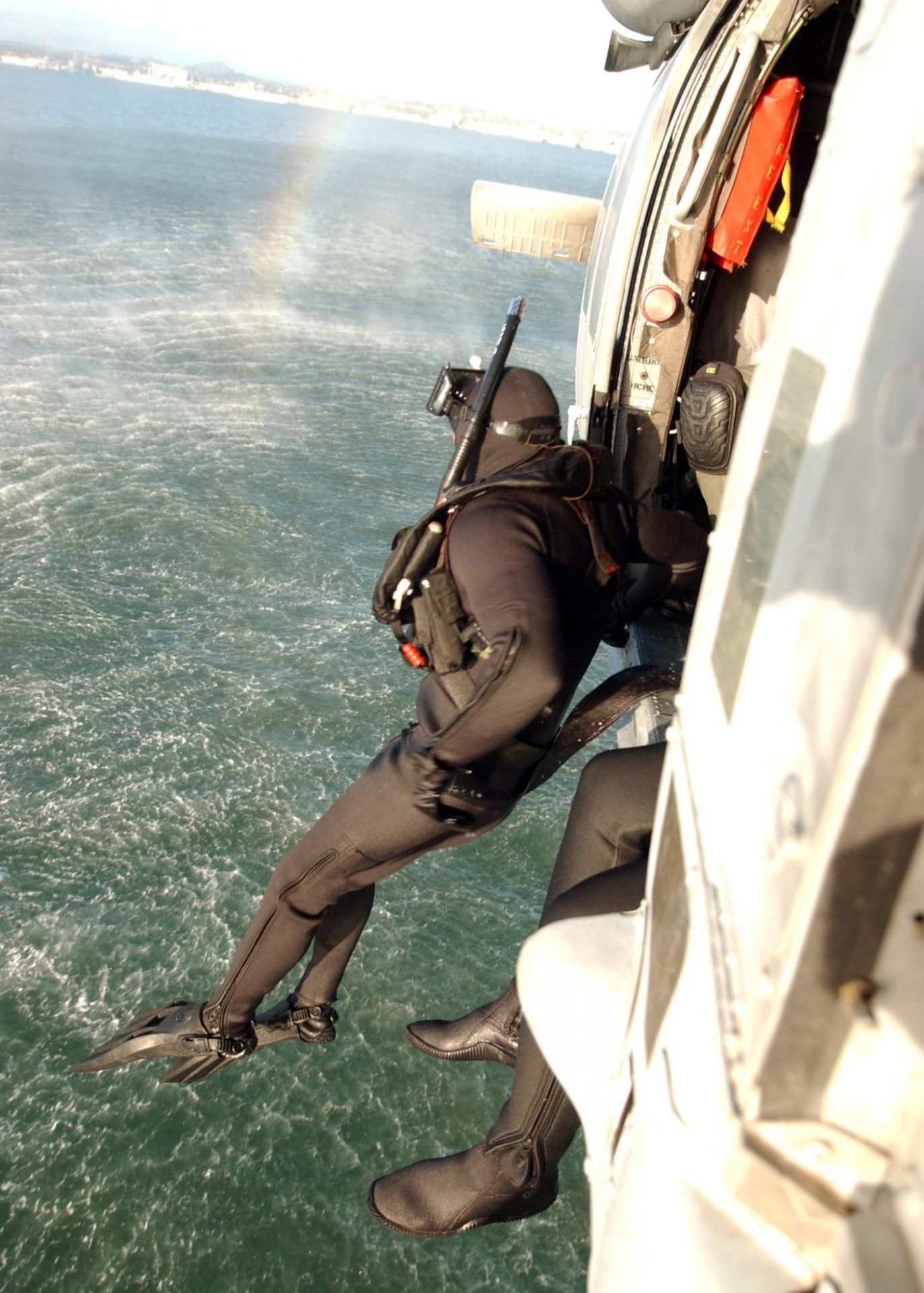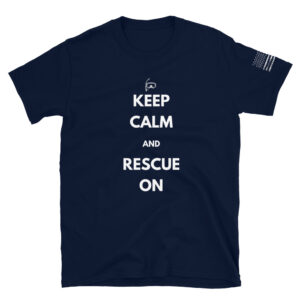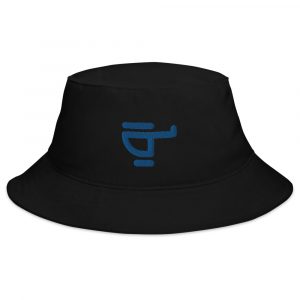Don't miss our flash to bang SALES!
So Others May Live
On the afternoon of 20 November 1998, my ship, the USS SHILOH (CG-67) received a request from the Australian Rescue Coordination Center for assistance in conducting a Search and Rescue mission for a 50 ft sailboat that had been demasted and was adrift in heavy seas. Four people were manifested to be onboard. Throughout the night, SHILOH closed the 270 nm distance to the sailboat’s position and launched our helicopter to assist in the search. Locating the boat, the first aircrew made an attempt to rescue its survivors. They tried to lower a rescue swimmer onto the sailboat, but the high sea state and small size of the boat made it impossible to safely put him on the deck on a moonless night. Sharks had been sighted swimming nearby and the crew decided not to jump anyone into the water. However they were able to confirm that two survivors remained on the wreckage.
At 0330 on the morning of 21st, we briefed a second rescue attempt. The crew consisted of Helicopter Aircraft Commander (HAC), LCDR Mark Sullivan, Co-pilot (H2P) LTJG Ian Neville-Neil, AW3 Kenneth Smith as the SAR utility crewman and myself, (AW2 Nathan Tierney), as the rescue swimmer. After conferring with AW3 Smith, who had flown the previous attempt, I dressed out in a full wet suit and gear. We launched just before sunrise. The SHILOH had closed to within a mile of the wreck and we were soon hovering over the small fifty-foot boat. We hovered over the small fifty-foot sailboat. The masts were completely broken off. A large piece of the mast hung off the port side and into the water. The cabin windows were broken. The sails and lines were strewn across the sailboat. Amongst the debris, in the center of the boat, the surviving couple huddled, waiting for us to save them.
The plan was to hover over the sailboat and then rapidly lower me to the deck. From there, I would assist them, one at a time, onto the hoist. Ready to go, I was lowered beyond ten feet below the helicopter (to bypass the slow speed setting on the hoist). I dangled below the helicopter for about twenty minutes as the pilots tried to get me over the sailboat. Their problem was that the swells kept sweeping the boat away from us, making it impossible to hold a steady hover over such a small object that was moving plus or minus twenty feet. At one point, I saw a wave miss our tail by only a few feet. Meanwhile, AW3 Smith’s work as a hoist operator was superb. He verbally directed the pilots while at the same time communicated with me via hand signals. One would expect that because I had no voice communications with the rest of the crew I would have become confused, but this was not the case. Throughout the entire evolution I was informed of what was going on. AW3 Smith’s outstanding crew coordination and quick actions prevented me from getting injured.
After repeated runs at the deck, I realized that it would be impossible to get onto the boat via a hoist and signaled AW3 Smith to bring me up. Once in the cabin, I told him to pass to the pilots that I wanted to jump. The Aircraft Commander was hesitant to jump me into the heavy swells, especially since sharks had been sighted. We tried again to lower me to the debris-fouled deck, but after several unsuccessful attempts, LCDR Sullivan decided to deploy me from a 15-ft hover behind the boat. I donned my fins. The pilots held a steady hover, and I jumped. They were able to place me about twenty feet away from the sailboat. It couldn’t have been better. The jump call came when the boat was in the trough of a swell and the helicopter was hovering above another trough, just below the tops of the swells. Had the placement for my water entry been different, the boat could have hit me when I came up for air or sucked me underneath as it ascended or descended.
I approached the boat as it rose up a swell. There wasn’t a visible ladder on either side. I attempted to climb up a plastic buoy device attached on the aft end of the boat. As I got about half way up, it broke and I fell back into the ocean. Struggling to make my way along the starboard side, the boat fell from the top of a swell into a trough dragging me with it. I hit my head several times and ingested quite a bit of water before the boat reached the bottom of the trough. Still holding on and after catching my breath, I shouted to the couple telling them I was a Navy Rescue Swimmer and was there to help. I asked if they had a ladder. They did not. As the boat began to rise up the next swell, I grabbed a thin sail line and attempted to climb up. Again, I reached half way. As I grabbed a piece of wooden siding and tried to pull myself into the boat, it splintered off and into the water went. On the third effort, I lost my grip as the boat tumbled down another wave, hitting my head as I fell. The lower part of my body was sucked beneath the boat and I was nearly swept under entirely. I grabbed onto a sail line and rode the wave out. On the next up swell, I attempted to climb again. The sail line was tough to clench with my wet suit gloves. Pitching and rocking with the boat, I kept a hold of the rope with one hand and managed to remove my gloves with my teeth. Unencumbered, I continued my climb but still lost my grip several times. Kicking hard with my fins, I almost made it once, but the boat tumbled away, down the crest of a wave. This fall was worse than the previous ones and nearly capsized the boat on top of me. After that wave had passed, I tried twice more to climb on board but to no avail.
 Tired and having inhaled a fair share of seawater, I backed away from the boat and made eye contact with the family. I shouted to them that I wanted the lady to jump in first, and that’d I’d swim with her to the hoist. I instructed the man to stay strapped to the boat and that I’d be right back. I told the woman to “Jump!” and she did so, with no other encouragement. As I swam up to her, she tried to use my head as a life preserver but I swung her around in a collar tow and told her she’d be “OK.” I told her again that I was a Navy Rescue Swimmer and that my name was Nathan. The woman’s nose was bleeding and was visibly broken and twisted. She had dark bruises under her eyelids, indicating a blow to the head. Her lip was torn open from the edge of her mouth to her left earlobe. There was some bleeding from her mouth and her jawbone was visible. She had a severe laceration above her left eyelid and her left eye was not visible due to the blood. I asked her routine questions about a possible back injury but due to her facial injury she could not talk coherently. I wasn’t sure whether to signal for a litter or not so I probed her back using the spinal highway method to see if she squirmed from pain. She didn’t flinch and based on seeing her walk around the deck of the boat earlier I did not signal for a litter. Given the size of the swells, I felt it was the right decision.
Tired and having inhaled a fair share of seawater, I backed away from the boat and made eye contact with the family. I shouted to them that I wanted the lady to jump in first, and that’d I’d swim with her to the hoist. I instructed the man to stay strapped to the boat and that I’d be right back. I told the woman to “Jump!” and she did so, with no other encouragement. As I swam up to her, she tried to use my head as a life preserver but I swung her around in a collar tow and told her she’d be “OK.” I told her again that I was a Navy Rescue Swimmer and that my name was Nathan. The woman’s nose was bleeding and was visibly broken and twisted. She had dark bruises under her eyelids, indicating a blow to the head. Her lip was torn open from the edge of her mouth to her left earlobe. There was some bleeding from her mouth and her jawbone was visible. She had a severe laceration above her left eyelid and her left eye was not visible due to the blood. I asked her routine questions about a possible back injury but due to her facial injury she could not talk coherently. I wasn’t sure whether to signal for a litter or not so I probed her back using the spinal highway method to see if she squirmed from pain. She didn’t flinch and based on seeing her walk around the deck of the boat earlier I did not signal for a litter. Given the size of the swells, I felt it was the right decision.
After signaling for pickup, we waited for the helicopter to get into position and lower the hoist. I glanced back to check on the sailboat. The waves thrust it right at us. No matter how hard I swam, the unpredictable ocean kept shoving the sailboat our way. As I towed the woman away from the boat, I lost sight of the helicopter and hoist. I looked back for the boat to get my reference, but it had disappeared behind a large swell. Everywhere I looked, water. Disoriented, I decided to wait for the current swell to pass. Rather than let the woman get hit head on by the oncoming wave, I positioned my back towards it and tried to cover her up as much as possible. On its crest, I saw the hoist again and started swimming. When it was within arm’s reach, a wave pushed it away. On every attempt, the rescue strop darted away. The pilots did their best to maintain a stable hover, but the 20-foot swells made it difficult. AW3 Smith continued to position the hoist near me. Quite a few more times I lost track of the helicopter while stuck in the troughs. Finally, a wave hit me in the face. As I stopped swimming to spit the water out, I saw the rescue strop and was able to grab it. I put it around the woman and fastened it up. She kept grabbing on, delaying the process, so I told her not to touch anything and that I’d get her to safety in just a second. After getting her fastened, I had to go underwater and unravel the tangled hoist from around her feet and legs. Once cleared, I signaled up hoist. AW3 Smith raised it with a steady hand. The slack was taken up just as she reached the top of a swell. The swell from beneath her fell as he raised the hoist. Out of the sea, she momentarily dangled about fifteen feet as the hoist reeled in.
 With one to go, I swam toward where I thought the boat should have been. Waiting for the swells to lift me so I could see, I found it toward my right. I had to swim against the waves to get there and two back-to-back waves hit my mouth. I had my snorkel out because it was continuously filling with water. Having aspirated too much water, I had to stop and unglamorously vomit. Twice more “purged” as I swam against the swells. Eventually reaching the boat, I instructed the man to “Jump!” He did. Not wanting another head hold, I had him turn around as I approached. I told him he’d be safe and that the woman was “OK.” As I checked the man over, I noted deep lacerations to his hands and a few other bruises. Exam complete, we were ready for pickup, and moved towards the helicopter.
With one to go, I swam toward where I thought the boat should have been. Waiting for the swells to lift me so I could see, I found it toward my right. I had to swim against the waves to get there and two back-to-back waves hit my mouth. I had my snorkel out because it was continuously filling with water. Having aspirated too much water, I had to stop and unglamorously vomit. Twice more “purged” as I swam against the swells. Eventually reaching the boat, I instructed the man to “Jump!” He did. Not wanting another head hold, I had him turn around as I approached. I told him he’d be safe and that the woman was “OK.” As I checked the man over, I noted deep lacerations to his hands and a few other bruises. Exam complete, we were ready for pickup, and moved towards the helicopter.
It took quite a bit of swimming to find the hoist again. I was still a bit fatigued from chasing the hoist around the last time and once again lost sight of the helicopter due to the waves around me. The ocean also pushed the boat toward us quite a bit. I had to constantly look back and dodge the boat while buddy towing the man. The hoist darted away just once as we were just within reach. On the second try, AW3 Smith lowered it with such precision that it was nearly laid in my hand. I was so happy! I was exhausted and honestly thought that I was going to have to go through the chase again. As I was hooking us up, we fell down into a trough and all the slack in the cable disappeared, yanking the hoist up and the man away. I grabbed on and shouted, “No don’t do that!” In retrospect, the man probably thought he had done something wrong. AW3 Smith responded quickly and gave out more slack. I hooked up and did a final check before signaling to be hoisted. It seemed like it took forever for the hoist to raise us. This was due to the enormous amount of slack in the line. The swells had pushed us off center from the hoist and when tension finally came, we were dragged through the water. The man got submerged at first but I quickly swung him around and placed myself under the water. It seemed I held my breath for quite sometime before we finally got pulled clear and were raised into the aircraft. All totaled, I had spent twenty minutes dangling at the end of the hoist, and forty-five minutes in the water performing the rescues.
After the cabin door was closed and the man seated, I plopped into the rescue seat. Before AW3 Smith could lock the man into his seat the man motioned Smith aside and shook my hand saying, ”Thank you.” It meant the world to me and I never felt better.
Our helicopter re-launched approximately 30 minutes after we landed to search for the other two people on board the yacht who had been washed overboard. We spent four more hours conducting an expanding search and controlling another helicopter. A significant amount of wreckage was scattered throughout the search area. No other survivors were found. That night the crew of the USS Shiloh raised nearly four thousand dollars in donations for the survivors. I witnessed compassion and generosity, as I never have seen before. Everyone on board the ship wanted to help. The following day, LT. Mark Dietter, LT. Arsenio Delatorre, and myself flew the couple to New Caledonia. There was a doctor and ambulance waiting for them at the airport. I don’t know what happened to them after that but I take comfort in knowing that I helped to get them that far.
While deployed I learned that I had been accepted to the U.S. Army Warrant Officer flight program to become a pilot. In 1999, despite being a new Army Warrant Officer I was awarded the Navy Marine Corps Medal for Heroism and my crew the National Helicopter Aircrew of the Year. Truly honored and humbled to have served with such selfless individuals and fellow Rescue Swimmers. To this day, my time as a Rescue Swimmer was the best of my twenty-year career. Thank you to all I served with, all who serve now, and all that will serve tomorrow as Rescue Swimmers – So others may live.
Some of my favorite Rescue Swimmer stuff that I have bought. My favorite is the long sleeve T-shirt and the human evolution to swimming one
Other cool rescue swimmer stuff and stories:
Popular Products
-

Keep Calm and Rescue On
Price range: $25.00 through $33.50 Select options This product has multiple variants. The options may be chosen on the product page -

Some Call it Adventure
Price range: $32.00 through $40.50 Select options This product has multiple variants. The options may be chosen on the product page -

SAR Dog
Price range: $19.50 through $28.00 Select options This product has multiple variants. The options may be chosen on the product page -

Helicopter Hat
$22.50 Select options This product has multiple variants. The options may be chosen on the product page




